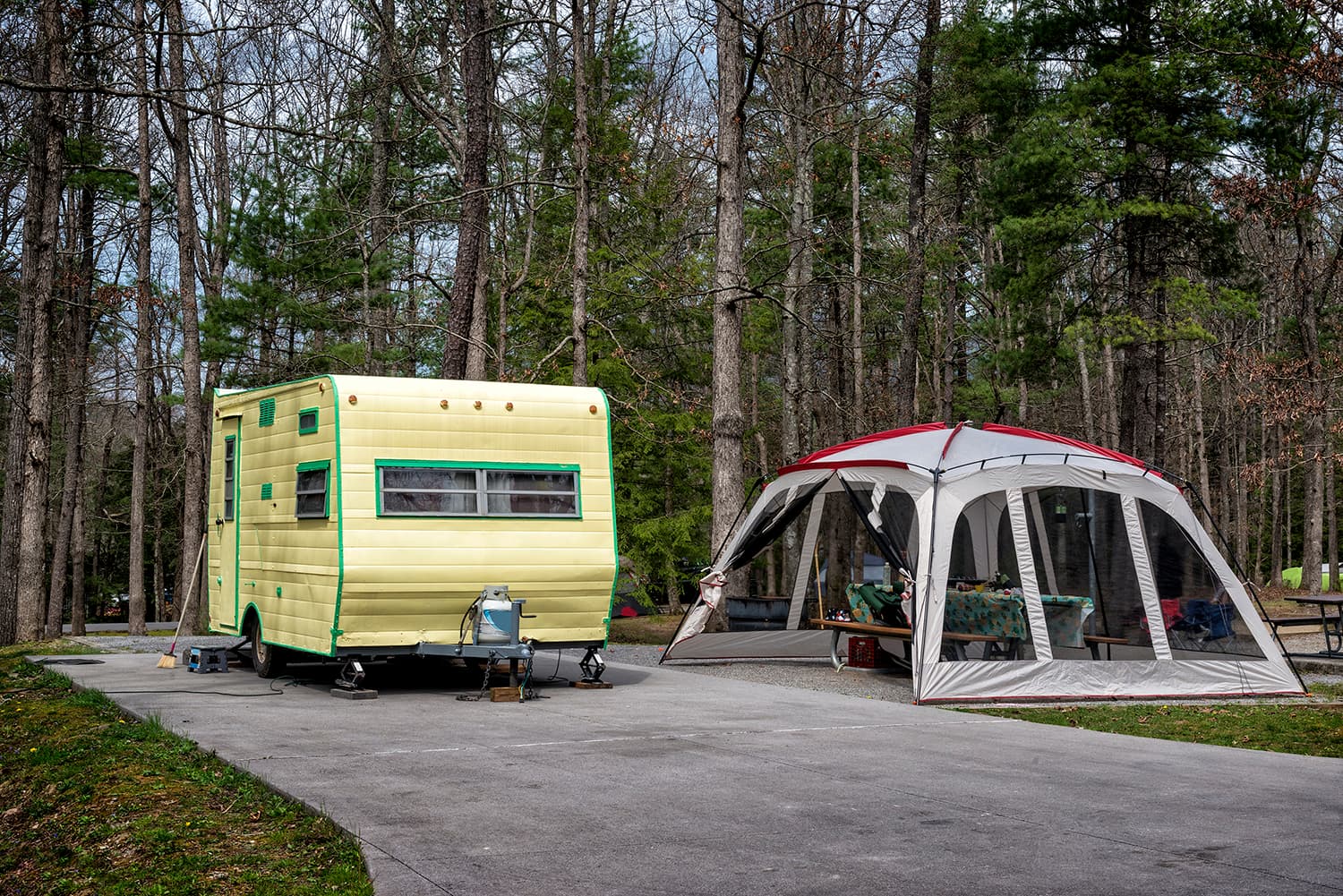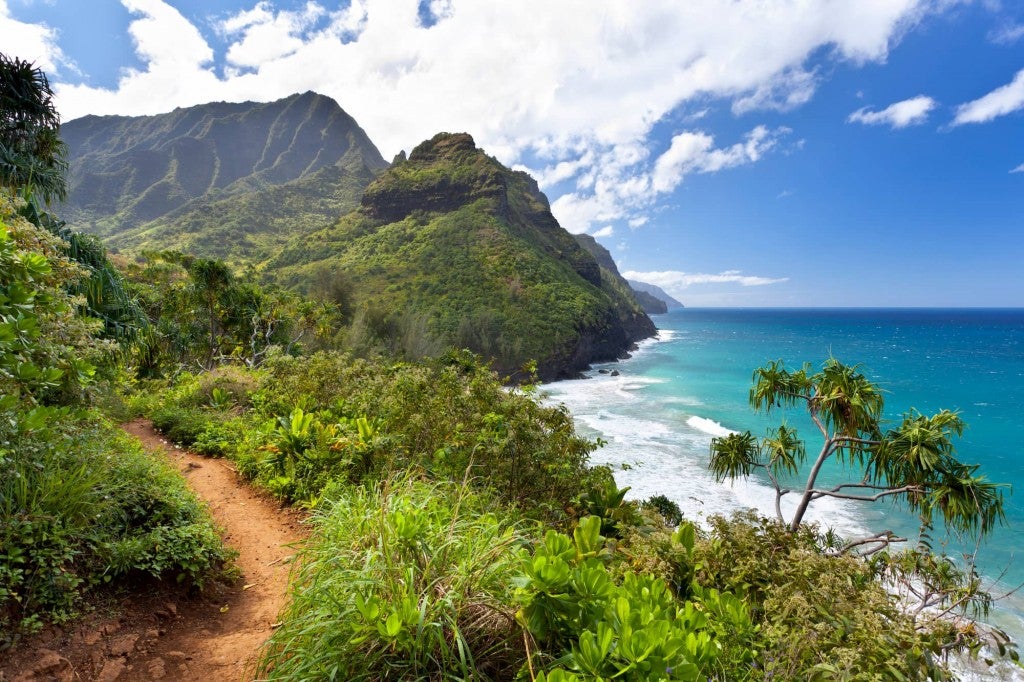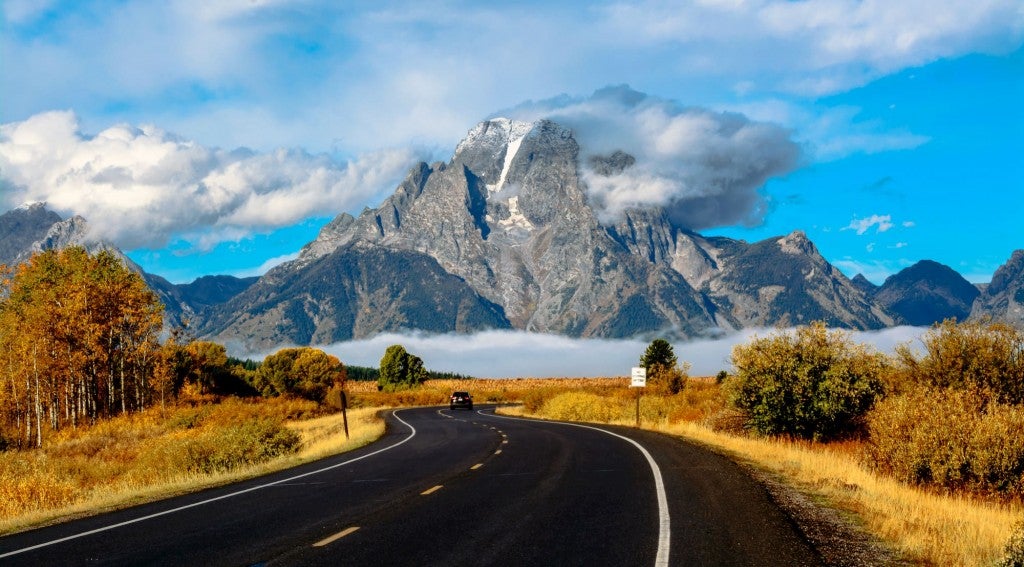To make your Great Smoky Mountains camping trip an unforgettable one, this guide will help you plan a variety of adventures in the park.
Step out of your tent on a cool morning in Great Smoky Mountains National Park and you might see a blooming flower poking through the soil or a lumbering black bear beneath a canopy of trees. From the fungi that grow in the deep, dark crevasses of the mountains to the 68 species of mammals that roam the forest, Great Smoky Mountains National Park is the most biodiverse park in the national park system.
The diversity of the plants, animals, and climate in the park are just one of the reasons why a visit to these mountains is so special. Spend an evening watching the fog descend upon the valley or a day rambling past waterfalls in the deep green deciduous forests. It’s hard not to be moved by this ancient stretch of land—the Great Smoky Mountains are part of the Appalachian Mountains, one of the oldest mountain chains in the world.
Divided by the North Carolina and Tennessee border, the park is over 522,000 acres, making it one of the largest protected areas in the eastern United States. The park also preserves a rich cultural history of Southern Appalachia.
With its natural beauty and cultural significance, it is no wonder the Great Smoky Mountains National Park is America’s most visited national park.
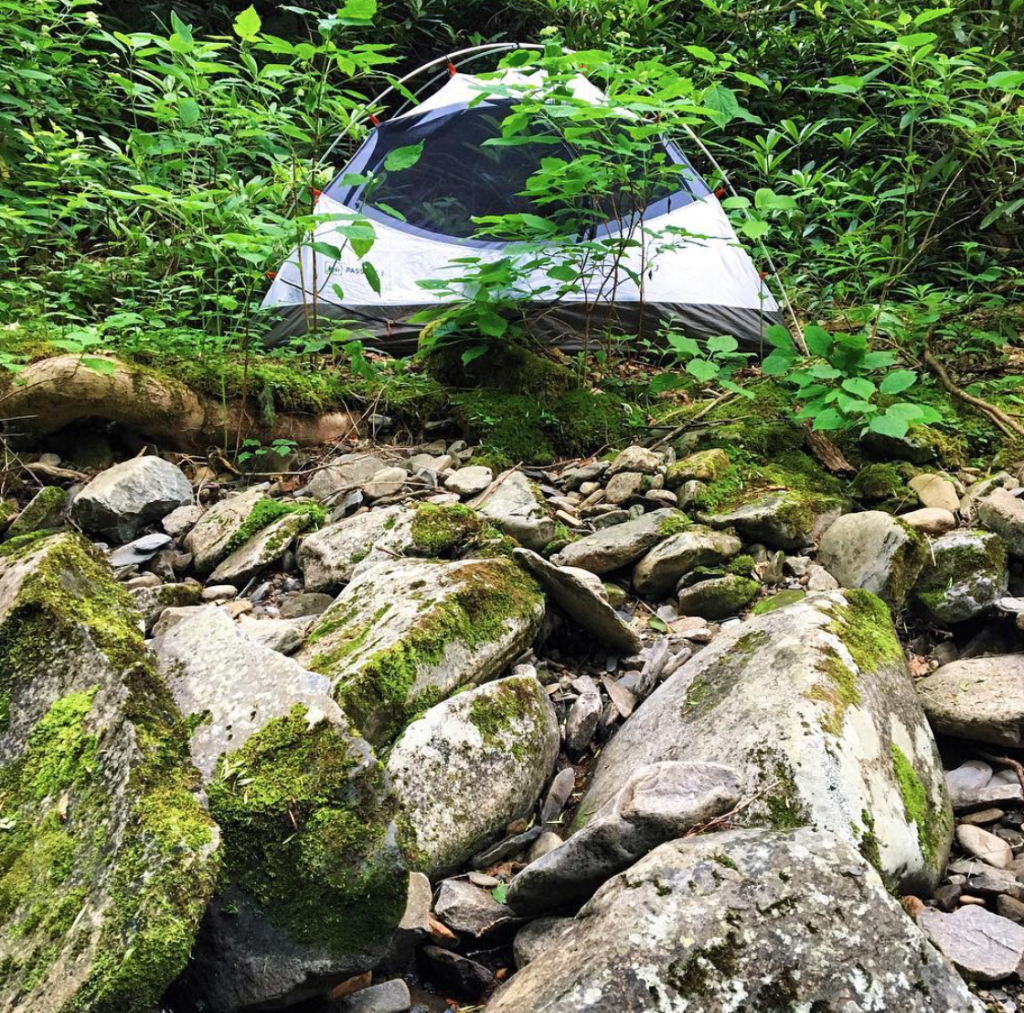
Image from The Dyrt Camper Cierra A.
A Brief History of Great Smoky Mountains National Park
Before the arrival of European settlers, Great Smoky Mountains National Park was the homeland of the Cherokee. The tribe had permanent towns, cultivated croplands, a sophisticated political system, and an extensive network of trails.
In 1830 the Indian Removal Act forced the Cherokee from their land, though some refused to leave and hid out in what would later become Great Smoky Mountains National Park. Some of the descendants of the Cherokee now live in the boundary just south of the park.
European settlers arrived in the valley between 1818 and 1821. By 1830 the settler population was over 270. They lived primitively, hunting off the land, growing food, and using timber to build houses.
But life changed drastically with the arrival of logging in the 1900s. Within 20 years the self-sufficiency of the settlers was replaced with a dependence on manufactured items, store-bought food, and money.
Loggers rapidly decimated the forest. If the Great Smoky Mountains National Park hadn’t been formed in 1934, the entire ecosystem likely would have crumbled. The establishment of the park saved 20% of the forest that remained uncut at the time.
Today, Great Smoky Mountains is America’s most visited National Park, receiving upwards of 11 million visitors per year. It’s also a UNESCO World Heritage Site and an International Biosphere Reserve.
Visitors to the park can get a sense of its cultural history at Cades Cove, a large valley with a rich history. Motorists and bicyclists tour the one-way 11-mile loop for a chance to spot animals (white-tailed deer, black bear, coyote, turkey and other animals are often spotted) and to get a glimpse into the lives of early European settlers by viewing the grist mill, barns, log houses, and churches still standing from this time period.
Great Smoky Mountains Camping
Whether you’re swinging in a hammock during the dog days of summer or snuggling down in a cold weather sleeping bag as the snow falls, Great Smoky Mountains camping is a great way to experience the park. The National Park Service maintains 10 developed campgrounds in the park, totaling 939 campsites. In addition to the sites listed below, the park has a limited number of group camping areas.
Each campground has restrooms with cold running water and flush toilets. There are no showers, electrical or water hookups in the park. Ask at the visitors center about pay showers available in the communities surrounding the park.
1. Abrams Creek Campground
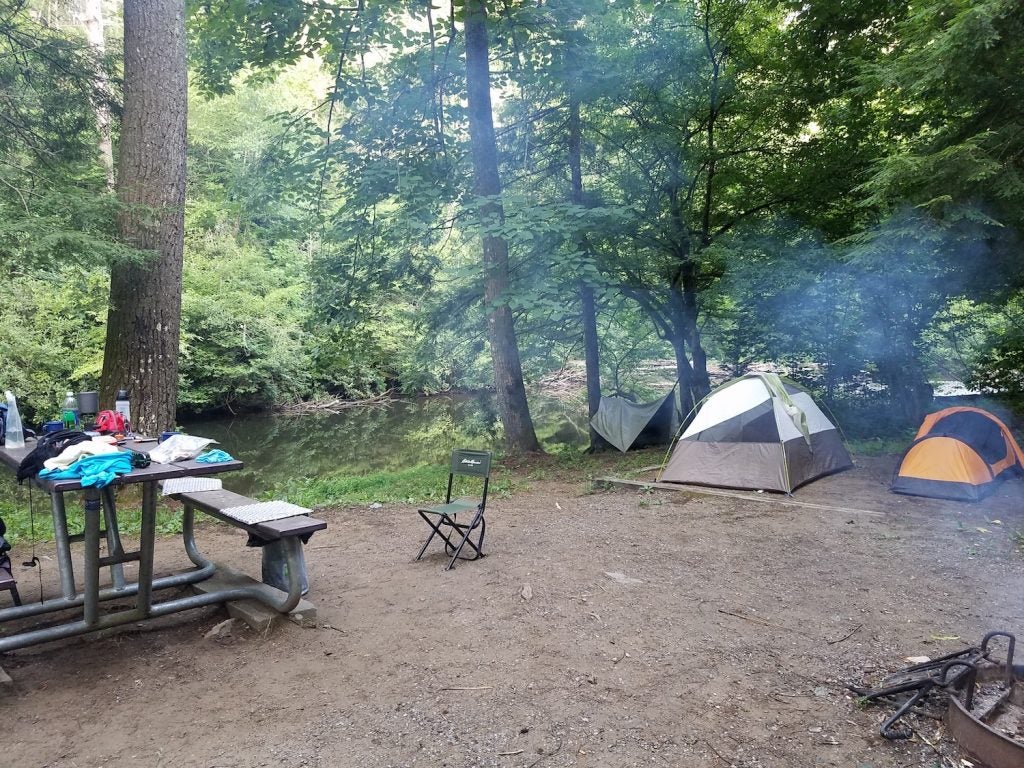
Image from The Dyrt Camper Mary D.
Located in a relatively remote section of the park, Abrams Creek is a small campground with 16 tent-only campsites. There is no electricity at Abrams Creek but there are flush toilets and drinking water.
Abrams Creek runs alongside the campsite, providing a soothing backdrop for sleeping. Advanced reservations are required. The campground opens in April and closes in October.
“I absolutely loved this area for Great Smoky National Park camping! We were on a two-night hiking trip and decided to drive to Abram’s for our last night. I’m excited to return and do the hikes around the area and come back to my comfy site on the water. ” —The Dyrt Camper Mary D.
2. Balsam Mountain Campground
Sitting at over 5,000 feet elevation, Balsam Mountain is a scenic campground surrounded by mountain peaks. The campground has campsites for tents and RVs up to 30-feet.
There is no electricity but there are flush toilets and drinking water. Elk are common in this part of the park in the spring and fall, so make sure to pack your binoculars. Advanced reservations are required. The campground opens in May and closes in October.
“If you want to put some distance between you and the masses at Great Smoky NP than head to Balsam Mountain Campground. Quieter and greater chance of seeing bears and other wildlife. And of course waterfalls galore!” —The Dyrt Camper Megan B.
3. Big Creek Campground
Offering 12 tent-only campsites, Big Creek Campground is a small and remote campground that is opened March through October. There is no electricity at Big Creek but there are flush toilets and running water (no showers.) Advanced reservations are required.
“Another family favorite. Whether you’re hiking to Midnight Hole (an amazing swimming hole where you can jump off the huge boulders next to a waterfall), or up to Mouse Creek Falls, or camping, or simply having a picnic and sticking your toes in the cool mountain water, it’s an incredible place. Usually pretty quiet and not too many people – except on the hottest days of summer!” —The Dyrt Camper Grace M.
4. Cades Cove Campground
Open year-round, Cades Cove is one of the most popular spots for Great Smoky Mountains camping. The campground has 159 campsites that can accommodate tents, trailers up to 35-feet, and motorhomes up to 40-feet. Though advanced reservations are not required, spots can be reserved in advance. There are flush toilets and drinking water at the campground.
“My husband and I love camping at Cades Cove! There are numerous hiking trails and places to dip your feet in the creek! The campground sites are pretty spacious and and a short walking distance to the general store and gift shop!” —The Dyrt Camper Alyssa M.
5. Cataloochee Campground
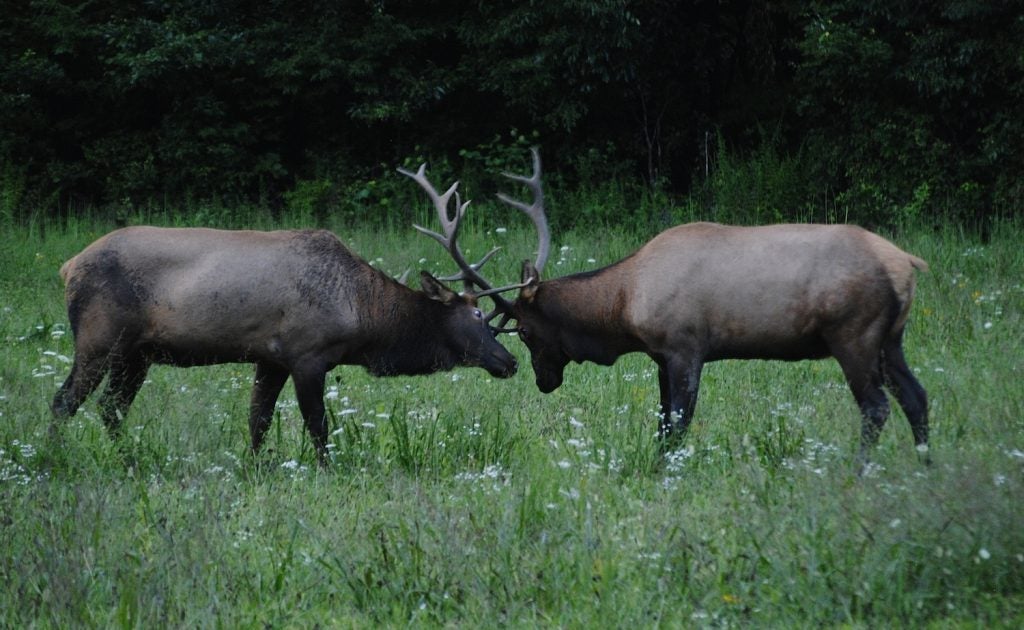
Image by The Dyrt Camper Myron C.
Open to campers from March to October, advanced reservations are required to camp at Cataloochee Campground. This 27-site campground can accommodate tents and RVs up to 31-feet.
It’s located in a less-populated part of the park and is a favorite with campers hoping to avoid the crowds. There are no hookups here but there are flush toilets and drinking water. The Cataloochee Horse Camp provides camping space for horse enthusiasts.
“This is an unbelievable area! We took our small camper and stayed during the Elk Rut and it was incredible! Our dog came too and we were able to hike and get some great pictures of elk in the valley!” —The Dyrt Camper Natalie M.
6. Cosby Campground
A typically quiet Great Smoky Mountains camping spot, Cosby Campground has 115 campsites that are available on a first-come, first-served basis and 42 campsites that can be reserved in advance. Cosby is mostly a tent campground, though a limited number of RV sites are available. There’s no electricity but flush toilets and drinking water are available.
“This is a great car camping experience that still gives you the feel of being in the wilderness.” —The Dyrt Camper Cory D.
7. Deep Creek Campground
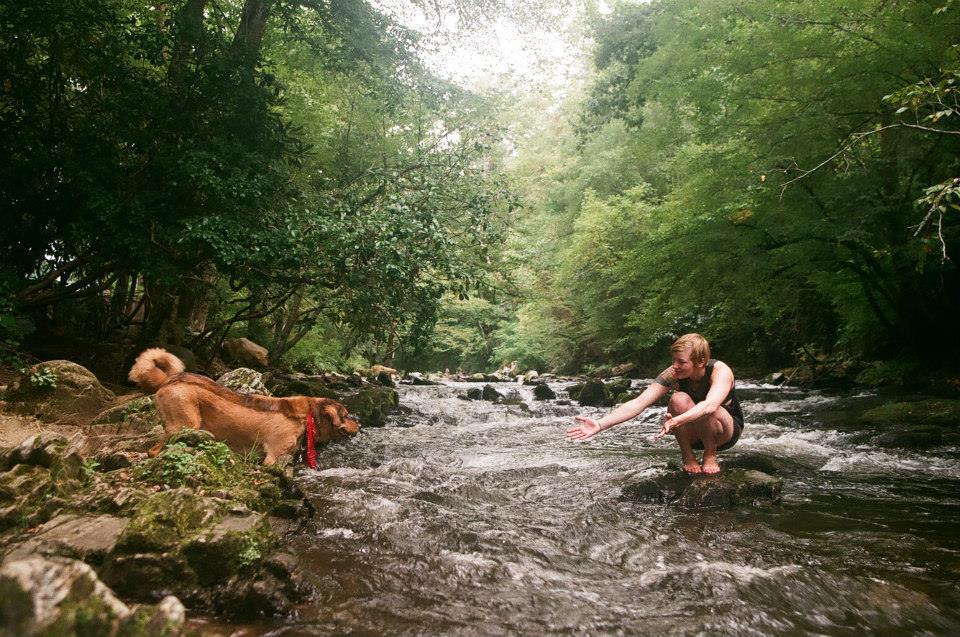
Image by They Dyrt Camper Amy B.
Available on a first-come, first-served basis, Deep Creek Campground has 92 campsites for tents and RVs up to 26-feet. Like all of the other campgrounds in Great Smoky Mountains National Park, there’s no electricity on site but there is drinking water and flush toilets.
“I love this area for camping and hiking.” —The Dyrt Camper Grace M.
8. Elkmont Campground
The largest campground in the park, Elkmont campground has 220 sites that can accommodate tents, trailers up to 32-feet and Motor Homes up to 35-feet. Though reservations are not required at Elkmont, they can be made in advance. The campground is open March- November.
“Beautiful camping, hiking, and incredible views and overlooks. My favorite time to camp or spend time in Elkmont is definitely the fall.” —The Dyrt camper Grace M.
9. Smokemont Campground
Open year-round, this 142-campsite campground has space for both tent and RV campers. The campsite has no electricity but it does have flush toilets and running water as well as a dump station that is also open year-round. Though reservations are not required to camp at Smokemont, they are recommended and can be made here.
“Very popular campground just inside the Park and not far from Cherokee NC. The RV loop has no hookups, although generators are allowed during the day. Bring water and be prepared for damp conditions.” —The Dyrt Camper Laura M.
10. Look Rock Campground
This campground is currently closed. Check with the National Park Service for updates.
Fees, Permits, and Reservations for Great Smoky National Park
The land that makes up Great Smoky Mountains National Park was once privately owned. Hoping to protect the land, the states of Tennessee and North Carolina, along with private residents including John D. Rockefeller, Jr., contributed to the creation of the park. Upon creation, it was declared that there would never be an entrance fee. Today, Great Smoky Mountains National Park is one of the only national parks that is completely free to enter.
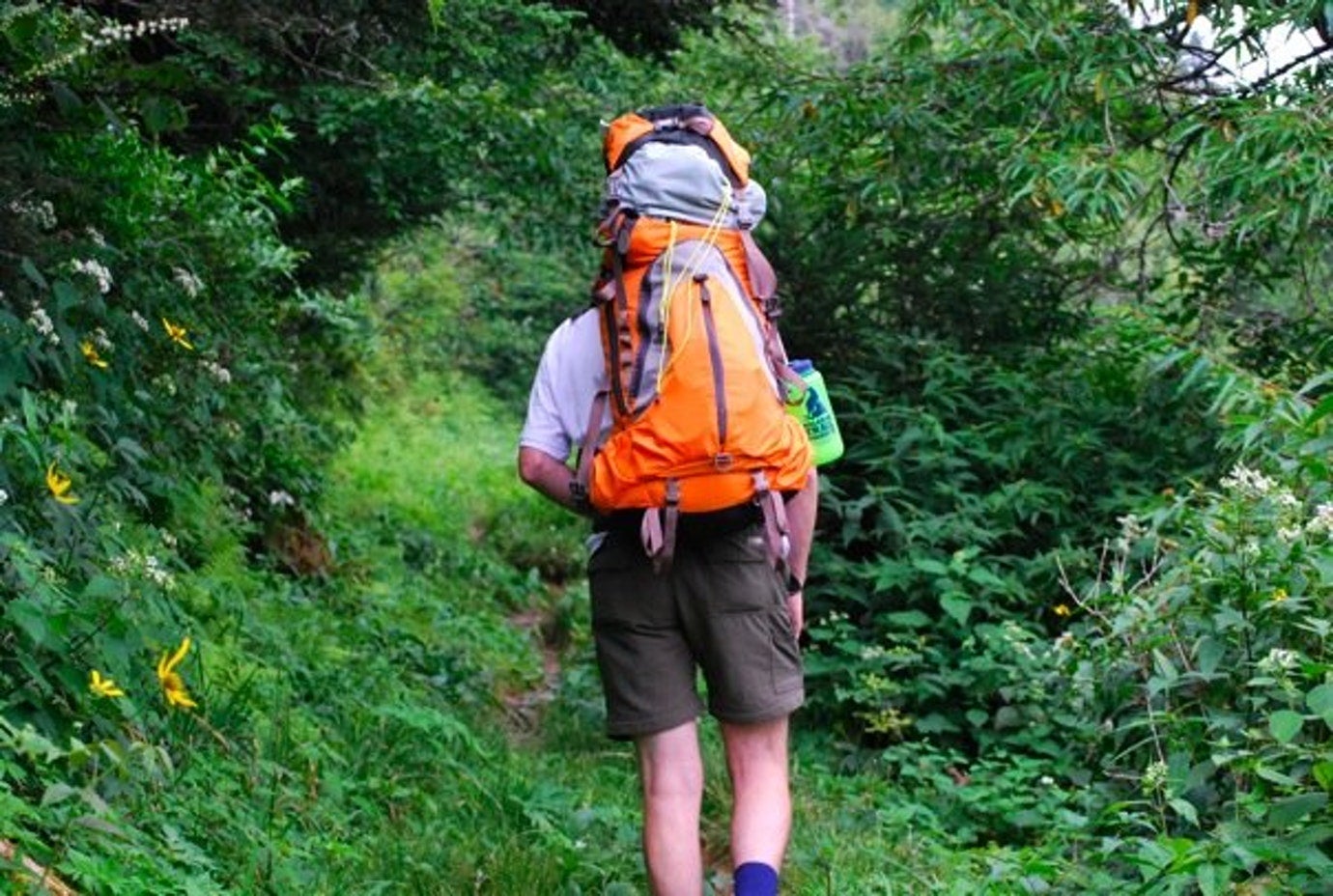
Image from The Dyrt Camper Asher K.
Permits and reservations are required for backcountry camping.
One of the most popular backpacking routes in Great Smoky Mountains National Park is a trip up to Le Conte Lodge, the highest guest lodge in the United States. It is accessible only by hiking. Permits to sleep in the lodge are issued once a year via a lottery system.
Great Smoky Mountains National Park Packing List
The Great Smoky Mountains experience four distinct seasons. Winter is cold, summer is hot and muggy and fall and winter can be anywhere in between. Because of the vast differences in elevation in the park, a muggy day in the valley can quickly be usurped by jacket weather in the higher elevations. And don’t forget the rain… some parts of the park receive 85 inches per year.
Every camper’s packing list for Great Smoky Mountains camping will look a little different, based on the time of year, the type of activities on the itinerary, and personal camping styles. But this packing list will get you started:
Camping Gear:
- Tent or hammocks (double check all tarps, stakes, and poles)
- Sleeping bags
- Sleeping pads
- Pillows
- Camp Chairs
- Headlamps
- Lantern
Cooking Gear:
- Camp stove and fuel
- Lighter
- Utensils (both cooking and eating)
- Pot(s) and pan(s)
- Oil
- Roasting sticks (for s’mores)
- Water jug
- Cutting board
- Knife
- Firewood
- Cooler
- Trash bags
Hiking Gear:
- 1 liter of water per hour of hiking
- Wicking long sleeve sun shirt
- Wicking short sleeve sun shirt
- Wicking long pants (bonus if they convert to shorts)
- Sunscreen
- Daypack
- Sun hat
- Snacks/lunch
- Trekking poles
- Hiking boots
- Wool or synthetic socks (stay away from cotton)
- Bandana (wet with water and wear around neck to keep cool)
- Bear spray
Additional Clothing:
- Rain gear (raincoat, pants, and cover for backpack)
- Long underwear/base layer
- Puffy jacket
- Shoes for around camp
- Warm hat
- Gloves
Extra Items:
- Bug spray
- Cards
- Toilet Paper
- First-aid and emergency prep kits
- Chapstick
Local Gear Shops in Cherokee and Gatlinburg (just in case)
Even when you double (or triple!) check your packing list, sometimes an essential item or two is forgotten. These retailers near both the North Carolina and Tennessee borders of Great Smoky Mountains National Park have everything you need.
Outdoor 76 – Cherokee, NC
Located just ¼ mile from the Cherokee entrance to the Great Smoky Mountains National Park, Outdoor 76 is an outdoor shop serving everyone from weekend warriors to Appalachian Trail thru-hikers.
17 Big Cove Road
Cherokee, NC 28719
Rivers Edge Outfitters – Cherokee, NC
Though it’s primarily a fishing shop, Rivers Edge Outfitters sells some hiking clothes and accessories, including boots.
61 Big Cove Road
Cherokee, NC 28719
Nantahala Outdoor Center (NOC) – Gatlinburg, TN
NOC’s 18,000 square-foot flagship store is located in downtown Gatlinburg and carries everything one might possibly need for an adventure in the Smoky Mountains.
1138 Parkway
Gatlinburg, TN 37738
The Day Hiker – Gatlinburg, TN
For two decades, The Day Hiker has provided quality and affordable outdoor supplies to visitors of Great Smoky Mountains National Park.
634 Parkway #1
Gatlinburg, TN 37738
What to see and do in Great Smoky Mountains National Park
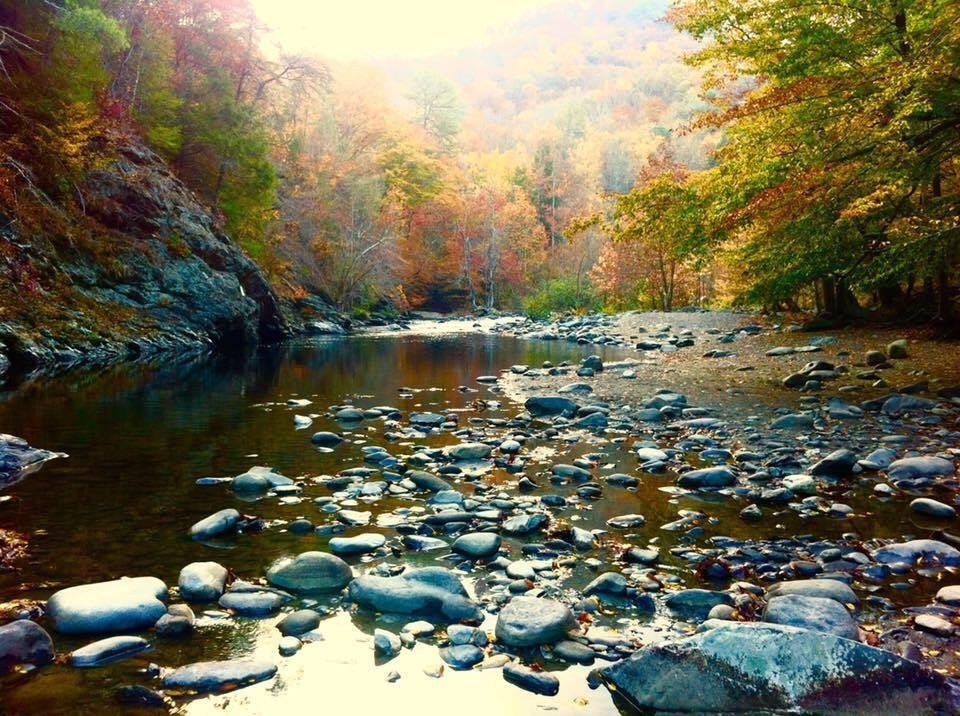
Image from The Dyrt Camper Buck R.
Great Smoky Mountains National Park is a hikers paradise with trails leading to cascading waterfalls and 360-degree vistas of Appalachian mountain peaks. But the park is also historically significant. Make sure to enjoy both the trails and the cultural heritage during your visit to the park.
Go Hiking
With over 800 miles of hiking trails, there’s no shortage of trailheads in the Great Smoky Mountains National Park. Below are a few of the most popular hikes in the park. If you want to head out with your four-legged friend, note that pets are not allowed on most trails (the exception to this rule is the Gatlinburg Trail and the Oconaluftee River Trail). Bear activity is common in this park, so carrying bear spray is recommended.
Clingmans Dome
Famous for its status as the highest point in Great Smoky Mountains National Park, a climb to the top of Clingmans Dome provides 360-degree views of the Smoky Mountains. Though it’s only a half-mile on a paved trail to the observation tower that’s perched on the summit, Clingmans Dome’s 13% gradient makes for a challenging climb.
Chimney Tops
This 4-mile round-trip hike is loved for its spectacular views. The hike begins with 3 stream crossings before ascending the side of the mountain. The climb to Chimney Tops is steep, the trail gains 1,400 feet in 2 miles, but the views of Mount Le Conte and other Appalachian peaks are worth the effort.
Charlies Bunion
A picturesque 8-mile round-trip hike on the Appalachian Trail to a stone outcrop known as Charlies Bunion, this popular hike offers exquisite views of the surrounding Smoky Mountains. Take note that the trail traverses some exposed cliffs so it’s not for the faint of heart.
Rainbow Falls
A hike that passes both Rainbow Falls and summits Mount Le Conte, Rainbow Falls Trail is a well-tread trail of switchbacks. It’s 2.7 miles one-way to Rainbow Falls. While many hikers stop there, if you want to make this a long-distance hike, continue to the summit of Mount Le Conte, a total of 6.7 miles one-way (13.4 total miles.)
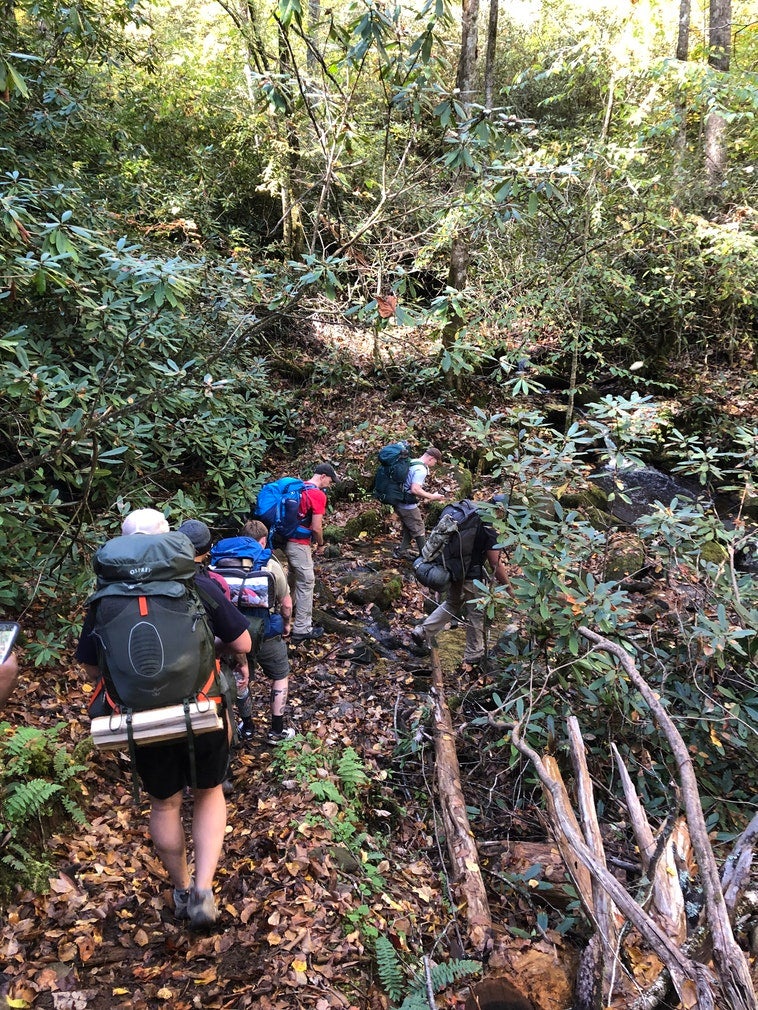
Image from The Dyrt camper Cory L.
Sign up for an educational workshop
The park partners with external organizations to offer a wide variety of programs to help visitors learn and explore the park.
The Friends of the Smokies offers guided hikes that vary in distance and difficulty and feature trails in both North Carolina and Tennessee. Expert guides include noted authors and wellness professionals.
The Great Smoky Mountains Association offers a variety of programs covering topics from cultural activities, night walks, and guided hikes.
The year-round residential environmental education center, Great Smoky Mountains Institute at Tremont, offers workshops and programs for all ages. Programs include summer camps, family camps, naturalist workshops, and hiking adventures.
The Smoky Mountain Field School offers workshops, day hikes, and family adventures. Programs include topics such as the synchronous fireflies, butterflies, wildflowers, mushrooms, old-growth forests, salamanders, stream life, elk, bears, tracking, early settlers, the Cherokee and more!
Bust out your bicycle
Many roads through Great Smoky Mountains National Park are not suitable to cycling due to steep terrain, narrow road surfaces, and heavy automobile traffic.
Cades Cove Loop Road, however, is an exception. The 11-mile one-way road is a popular bicycling area and provides cyclists with great opportunities for wildlife viewing and touring 19th-century homesites. In the summer and fall, bicycles may be rented at the Cades Cove Campground store. From May until September, the loop road is closed to motor vehicle traffic on Wednesday and Saturday mornings until 10 a.m., allowing cyclists and pedestrians car-free access to the cove.
Other areas suitable for cyclists include the roads in the Greenbrier and Tremont areas in Tennessee and the Cataloochee Valley and Lakeview Drive in North Carolina.
There are no mountain biking trails in the park.
Cast your reel
Great Smoky Mountains National Park is a fisherman’s dream. It’s home to nearly 2,900 miles of streams and the last wild trout habitats in the eastern United States. Within the park there are a variety of angling experiences, from remote headwater trout streams to large cool water smallmouth bass streams.
Fishing is permitted year-round in the park, from 30 minutes before sunrise to 30 minutes after sunset. The park allows fishing in all streams. You must possess a valid fishing license or permit from either Tennessee or North Carolina.
Either state license is valid throughout the park and no trout stamp is required. Fishing licenses and permits are not available in the park but may be purchased in nearby towns or online.
Hop on a horse
Guided horseback rides are available at four concession horseback riding stables in the park from mid-March through late November. Rides last from 45 minutes to several hours and are at a walking pace. Contact the stable you are interested in visiting for more details:
Cades Cove, near Townsend, TN: (865) 448-9009
Smokemont, near Cherokee, NC: (828) 497-2373
Smoky Mountain, near Gatlinburg, TN: (865) 436-5634.
Sugarlands, near Gatlinburg, TN: (865) 436-3535.
If you’d like to ride your own horse in the park, 550 miles of the park’s hiking trails are open to horses.
Take a Hayride
Visitors that want to experience the park in a unique way can take a 1.5 to 2-hour hayride around the Cades Cove Loop Road. The hayride is offered by Cades Cove Riding Stables. Reservations are generally required and can be made by calling (865) 448-9009. Rates are $12 per person.
Ranger-led hayrides are also offered on some evenings on a first-come, first-served basis. Check the ranger station for a schedule of events. The rate for the ranger-led hayride is $14 per person.
Horse-drawn carriage and wagon rides are also offered in the park and last between 20-30 minutes. Call the concessionaires for more details:
Carriage Ride
Cades Cove, near Townsend, TN (865) 448-9009
Rate is $12.00 per person. Visit the website for additional information.
Wagon Ride
Smokemont, near Cherokee, NC (828) 497-2373
Rate is $10.00 per person. Visit the website for additional information.
Weather and Peak Visitor Months
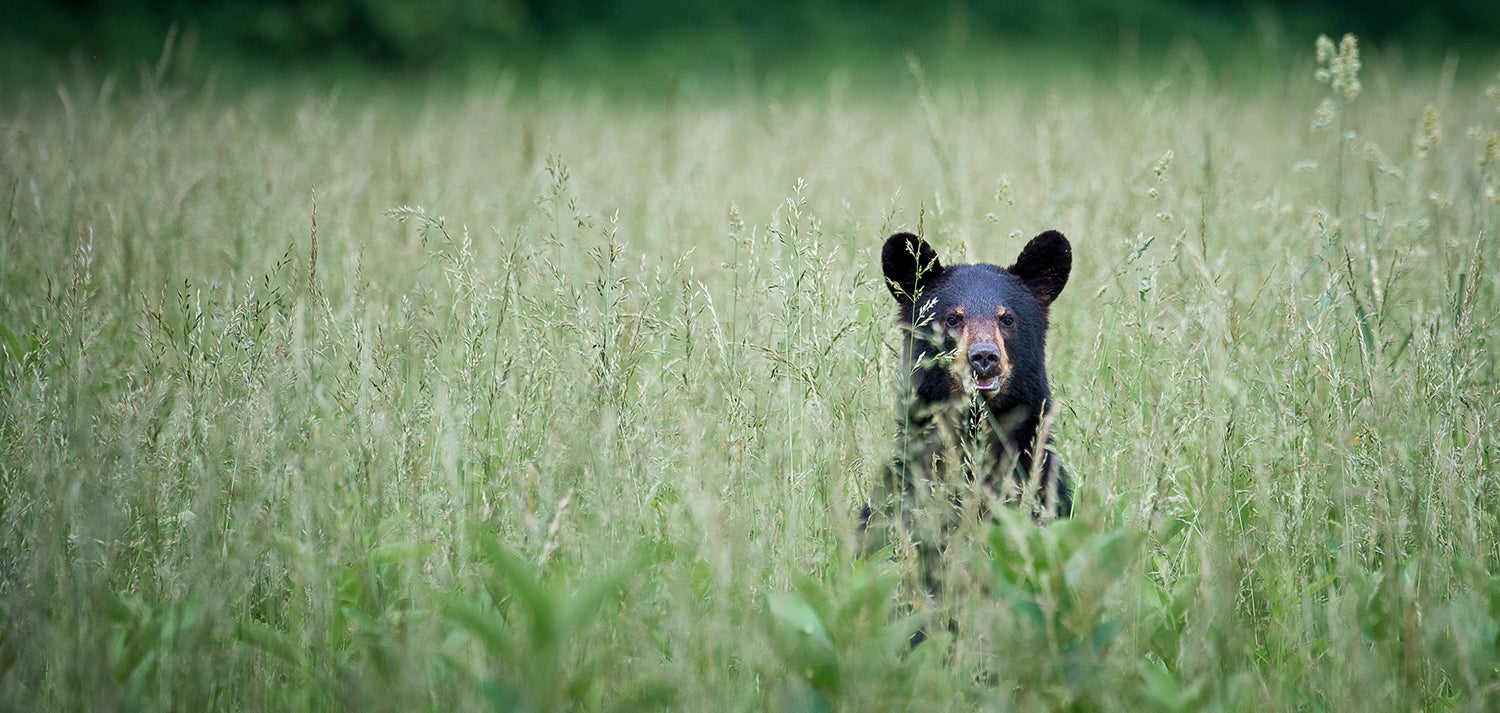
Elevations in the park vary from 875 feet to 6,643 feet. Because of this drastic range in elevation, temperatures from one point in the park to another can range between 10-20 degrees Fahrenheit.
Clear weather in low elevations does not guarantee clear skies at the higher points. The park lowlands average 55 inches of rain per year. Clingmans Dome, the highest point in the park, averages 85 inches of rain per year.
With four distinct seasons, the weather changes in the Smokies year-round.
Spring
Spring brings unpredictable weather to the park. In March, it’s not uncommon for the valley to reach 60 degrees while it snows in the higher elevations. By mid-April, the drastic swings in weather have usually settled, though freezing temperatures are still common in higher elevations. By May temperatures are usually warmer with highs in the 70s and 80s and lows in the 40s or 50s.
March: High 61/Low 34
April: High 71/Low 42
May: High 79/Low 50
Summer
Summer in the Smokies is hot and humid and afternoon showers and thunderstorms are frequent. Lower elevations can reach 90 degrees in the summer months, but the weather is more comfortable in the higher elevations. On Mount Le Conte, for example, it is extremely uncommon for temperatures to reach 80 degrees.
June: High 86/Low 58
July: High 88/ Low 59
August: High 87/ Low 60
Fall
A season of warm days and crisp, cool nights, highs are usually in the 70s and 80s in September and the 50s and 60s in November. In the higher elevations, snow is possible by November.
September: High 83/ Low 55
October: High 73/ Low 43
November: High 61/ Low 33
Winter
Winter is usually moderate, with many days hovering around a comfortable 50 degrees. Most nights, no matter where you are in the park, are below freezing. It’s most likely to snow in January and February, with accumulations of around an inch in the valley and up to 2 feet in the higher elevations during big snowstorms.
December: High 52/ Low 28
January: High 51/ Low 28
February: High 54/ Low 29
The Great Smoky Mountains is Americas most visited National Park receiving between 8-11 million visitors per year. The park has two peak seasons. Mid-summer (mid-June through mid-August) and the entire month of October, when the fall colors begin to peak. Weekends in October are especially crowded and traffic congestion should be expected.
Most visitors tour the park between 10am- 6pm. To avoid the crowds consider an early morning or sunset hike.
More Stories From The Dyrt on Great Smoky Mountains Camping:
- This 1,700-mile Thru-Hike Covers More Than North Carolina’s Wilderness
- Full-Time Campers Discover Five-Star Camping in the Blue Ridge Mountains
- Cane Creek Park, NC
Related Campgrounds:
- Lake Norman Campground, Troutman, NC
- Camp Driftwood, Alexander, NC
- Deer Creek Tennessee
Popular Articles:
Articles on The Dyrt Magazine may contain links to affiliate websites. The Dyrt receives an affiliate commission for any purchases made by using such links at no additional cost to you the consumer.

